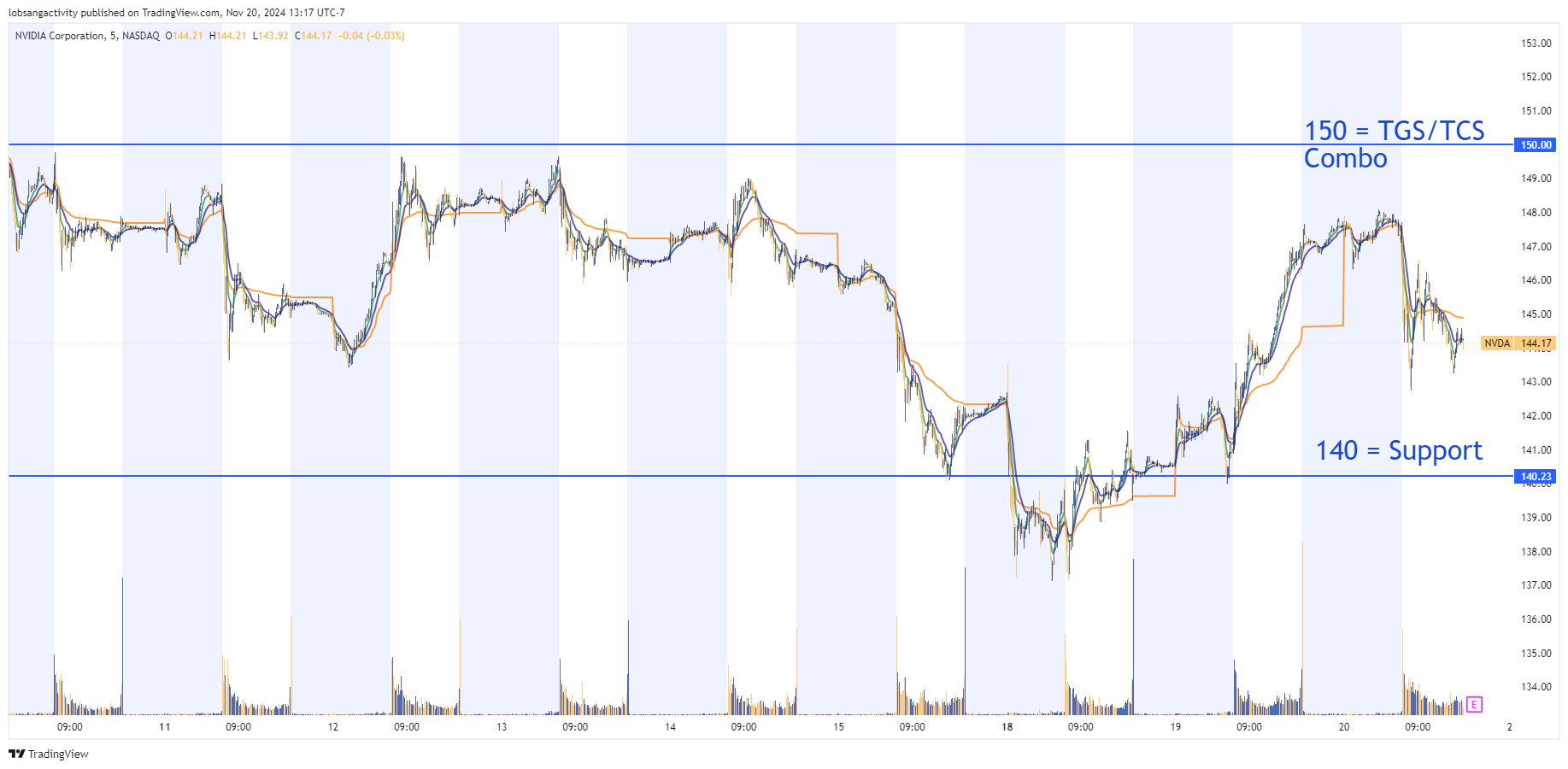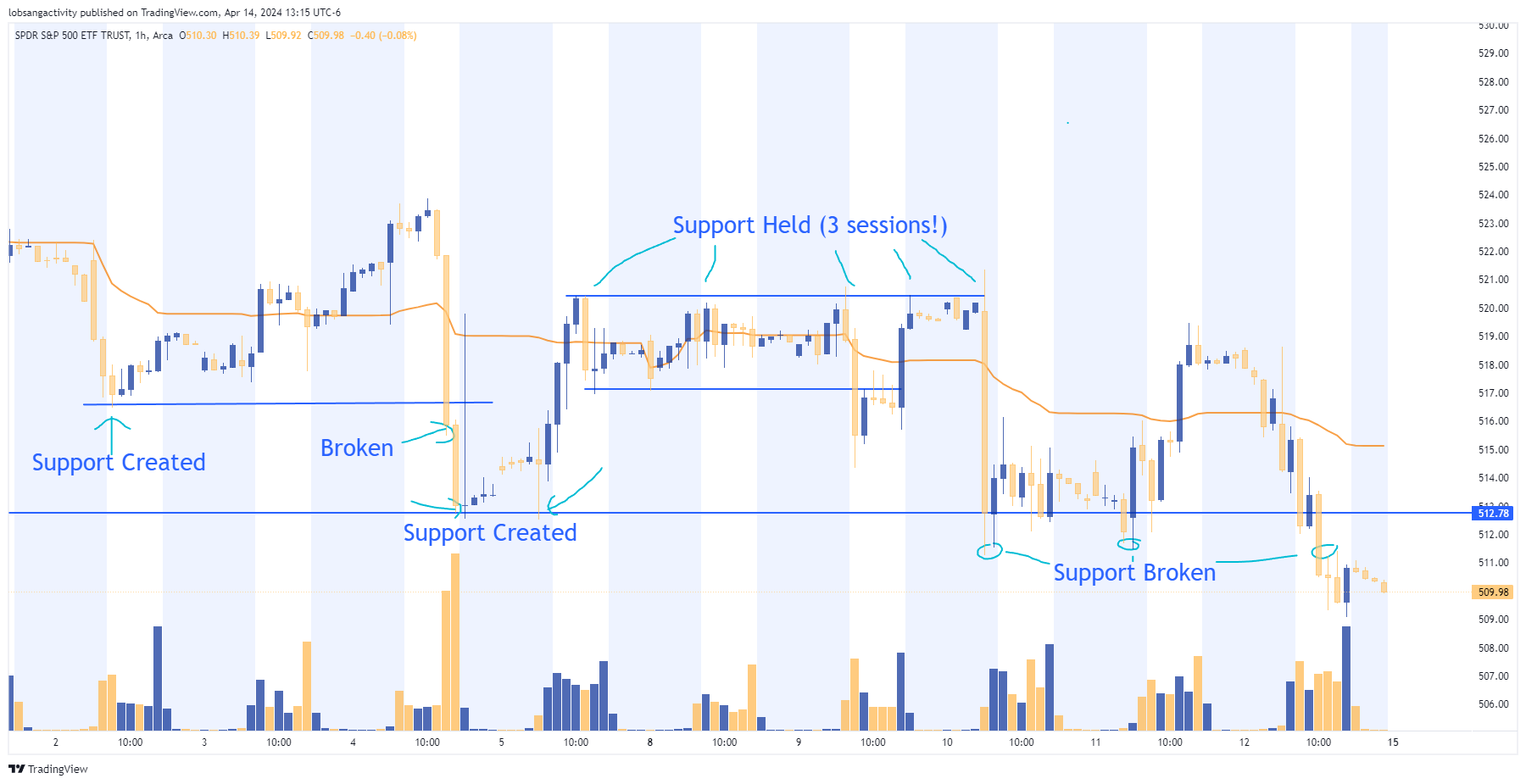NVDA earnings are coming fast and furious aftermarket today, and I’m looking to take a trade on them via options. But before I share how I’m going to trade them specifically, I want to dive into the PFP for NVDA.
What is PFP?
PFP is my decision criteria for taking any trade. It stands for Positioning, Flows and Price Action.
Positioning tells me where the institutions are parked and what is possible in terms of liquidity along with high probability bull and bear targets, along with key support and resistance zones.
Flow stands for the order flow or buying and selling transactions for the day (shares and options).
Price action represents a different ‘channel’ to find repeatable patterns in the flow and positioning over time, along with where current momentum is turning.
By using my PFP criteria for every trade, I can find high probability winning trades.
Turning to NVDA
Now that I have explained my method, looking at NVDA, we have some important details to examine to get a sense of where the PFP is lining up.
First off, we have an implied move (IM) of about $13.15. This means if the markets closed right now (as of this writing – 3pm EST) and the earnings were released, the options market is estimating a projected max move to be either up or down $13.15 from the current price ($144.36 as of this writing).
This IM gives us a sense of the potential range that can manifest post earnings.
It should be noted that HV (historical vol) is around 40% and IV (implied vol) is at 61% with both being annualized figures. The IV for the options expiring this Fri are 155%, so well above the 61% IV, meaning we have a high IV/skew for this weeks options.
What About Positioning?
The current TCS (top call strike) is parked at 150, which also aligns with the TGS (top gamma strike). This is within the IM so a bullish earnings release should easily tap 150. The question is if we get a really bullish earnings release, how far can it go above 150?
I see almost the same positioning at 155 as I do 160, so 160 (not far beyond the IM) would be a reasonable upside target for a strong earnings release, especially by the Dec op-ex. I see less fuel at 170 and 180, which are likely ‘moonshot’ targets for the Jan op-ex.
To the downside, positioning is solid down to 120, but gets thin/weak at 110 and then 100. These would be ‘very bad’ downside strikes for the Jan op-ex if earnings are terrible and markets weaken drastically post release.
What About Order Flows?
While shares have been robust at around 199M (30 day avg at 218M) options have not been particularly bullish on the day. Current notional delta readings for calls have been mildly bullish (+75M) while puts have been heavily negative (-300M). This translates into a mild amount of call buying, and a lot more put buying. Hence, options aren’t too bullish heading into the earnings release.
What About Price Action?
Looking at the 5min chart below, we can see price action has mostly been contained between the 150 TGS/TCS combo strike, and the 140/138 support zone over the last 9 sessions. Thus traders haven’t been buying up calls or puts heavily into he earnings, perhaps suggesting a mixed sentiment going into the earnings release.

I think a 150+ print on a bullish earnings release is a high probability target while a 135/130 print on a weak/bearish earnings release is a likely downside target should the numbers come out weak.
How Am I Trading It?
To avoid paying the high IV/skew, I’m looking at Dec/Jan op-ex contracts for proxies like SMH and QQQ which are IMO under priced. I’m leaning towards long iron condors for playing both sides or using call BWB’s (broken wing butterflies) for bullish only trades.
I’ll share more with my members live in the Benzinga Option School or Trading Waves products so stay tuned on how I’m trading it specifically, but you should have some good information going forward on how to trade these earnings based on the PFP (positioning, flows and price action).


